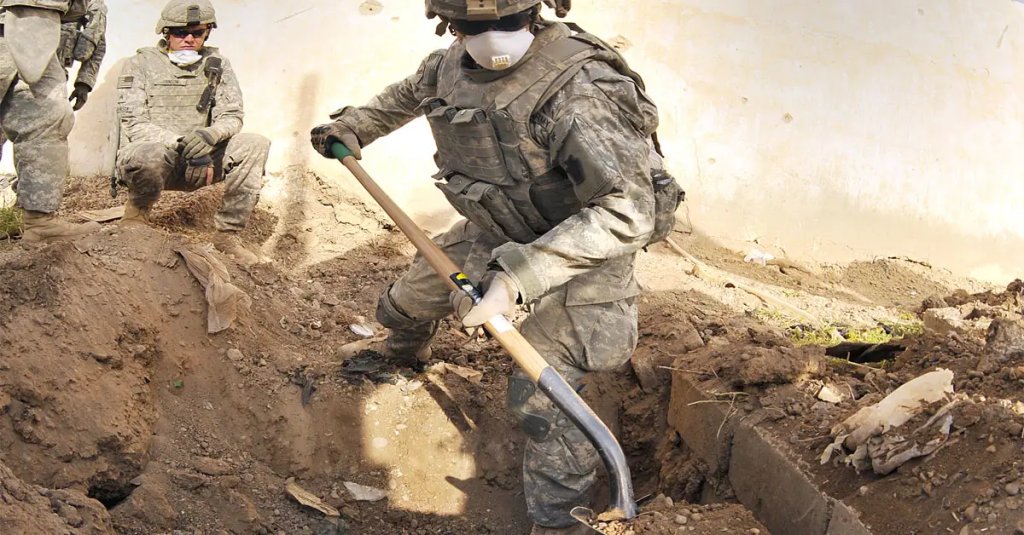

As far as modern conventional warfare is concerned, the bullet or small explosive device are the standard, go-to weapon. And even today, many units around the world still adapt a bayonet into the unit crest. But no weapon turns more heads while cracking the most skulls quite like the shovel.
To the uninformed, the shovel seems casual enough. It’s even played up for comic effect in cartoons, usually with a wacky sound effect. There’s even a video game called Shovel Knight that treats the titular character’s weapon as a joke.
Young privates don’t believe the shovel’s history as a weapon because they don’t know military history and only heard it used as a weapon from an salty old Sergeant First Class who has a story about his buddy “getting an e-tool kill.”

This isn’t like those stories about a guy killing three men in a bar with a pencil. The spade had many uses back in the day, especially during the trench warfare of WWI and WWII. It wasn’t the most effective melee combat weapon, but damn was it handy.
But the bayonet has practically lost its importance. It is usually the fashion now to charge with bombs and spades only. The sharpened spade is a more handy and many-sided weapon; not only can it be used for jabbing a man under the chin, but it is much better for striking with because of its greater weight; and if one hits between the neck and shoulder it easily cleaves as far down as the chest. All Quiet on the Western Front by Erich Maria Remarque
Much of the fighting was done between opposing trenches and occasionally the unfortunate bastards who found themselves in no-man’s land. But to even take an inch from the enemy, you had to over take their trench.
Raiding parties generally cleared portions of the trenches with hand grenades and shotguns. When it came time to fight the stragglers, the longer rifle and bayonet combo just wasn’t effective in narrow and often swamped trenches. Even the beauty of the trench knife – which included a knife for stabbing, brass knuckles for punching, and a spiked pummel for puncturing the enemy’s head– just didn’t have the range or power needed.

Troops being raided quickly adapted the tool they used to dig those trenches into a deadly weapon to defend those trenches. The sharp edge, originally purposed to cut through roots, found it’s way into the necks of their enemy. The additional weight behind it meant it could also break bones where the bayonet just pierced.
If the bayonet became the successor to a spear with a firearm, the spade was a mix of a battle ax with a club. Of course, troops would carry both into battle. But if one were to get lodged too deep in the enemy, which would make more sense to leave on the battlefield?

Stories about troops using a shovel as a weapon continue well through the Vietnam War. Even the modern E-Tool is designed as a call back to the glory days of it being an unexpectedly deadly weapon.
For more information on and the inspiration for this article, watch the video below.

(YouTube, InRangeTV)
